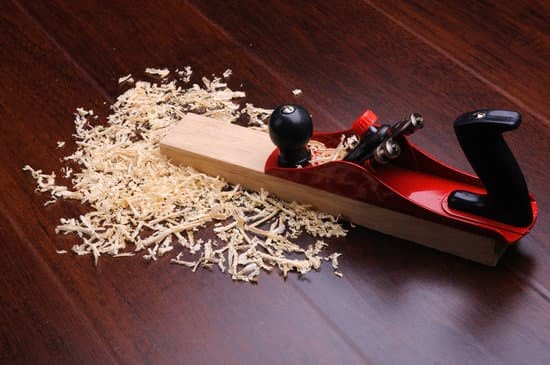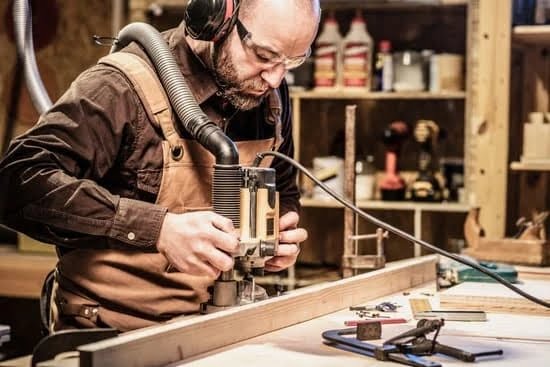A woodworking workbench is an essential tool for any woodworker, providing a sturdy and reliable surface for various projects. Whether you’re a seasoned professional or just starting out, having a well-built workbench can significantly improve the quality of your woodworking endeavors. In this article, we will guide you on how to make a woodworking workbench that suits your needs and preferences.
When it comes to creating a woodworking workbench, choosing the right materials is crucial for durability and functionality. Different types of wood, such as hardwoods like oak or maple, or softwoods like pine, offer varying levels of strength and aesthetics. Additionally, considering other materials like metal for reinforcement or stability can further enhance the construction of your workbench.
Equipped with the necessary tools and knowledge, constructing a woodworking workbench can be a rewarding project that allows you to customize it to fit your workspace and requirements. By exploring various design considerations and step-by-step construction guides provided in this article, you’ll be able to create a workbench that not only meets your needs but also enhances your woodworking experience. Stay tuned as we delve deeper into the world of crafting the perfect woodworking workbench.
Choosing the Right Materials
When it comes to making a woodworking workbench, choosing the right materials is crucial for ensuring its durability and functionality. The type of wood you select will have a significant impact on the overall quality of your workbench. Here are some options to consider:
- Hardwoods such as maple, oak, or beech are popular choices for their strength and durability.
- Softwoods like pine or fir are more affordable options but may not hold up as well over time.
- Baltic birch plywood is another great material for workbench tops due to its stability and smooth surface.
In addition to wood, you may also need to consider other materials for the base or legs of your workbench. Steel or metal frames can provide additional support and stability, while adjustable feet can help level the workbench on uneven surfaces. Don’t forget about fasteners such as screws, bolts, and washers to securely assemble your workbench.
Before purchasing any materials, take into account the size of your workspace and the intended use of the workbench. Consider factors like weight capacity, resistance to moisture and chemicals, and ease of maintenance when selecting materials for your woodworking workbench.
Essential Tools Needed: List of Tools Required for Constructing a Workbench
Building a woodworking workbench requires specific tools to ensure precision and efficiency throughout the construction process. Here is a list of essential tools you will need:
- Tape measure
- Circular saw or table saw
- Cordless drill with drill bits
- Hammer or rubber mallet
These tools will help you accurately cut and assemble the wood pieces for your workbench. It’s important to have a sturdy work surface and good lighting in your workspace to effectively use these tools while building your woodworking workbench.
Before beginning construction, familiarize yourself with each tool’s function and safety precautions. Proper handling of tools is essential for preventing injuries during the building process. Additionally, keep your tools well-maintained by cleaning them after each use and storing them in a dry place to prolong their lifespan.
Remember that having the right tools at hand is just as important as choosing the right materials when making a woodworking workbench. Invest in quality tools that will make the construction process smoother and more enjoyable.
Tools Needed
When it comes to building a woodworking workbench, having the right tools is essential to ensure a successful construction process. Here is a list of essential tools needed and how to use them effectively:
1. Measuring Tape: Accurate measurements are crucial when constructing a workbench. Make sure to measure twice and cut once to avoid any costly mistakes.
2. Circular Saw or Table Saw: These power tools are necessary for cutting the wood to the desired dimensions. Be sure to follow all safety precautions when using these tools.
3. Drill and Drill Bits: You will need a drill for making holes and attaching pieces together. Different drill bits can be used depending on the type of screws or bolts you are using.
4. Screwdriver or Screw Gun: For driving screws into the wood, a screwdriver or screw gun is necessary. Make sure to choose the appropriate size for your project.
5. Clamps: Clamps are useful for holding pieces of wood together while assembling the workbench. They help ensure that everything stays in place while you work.
6. Workbench Vise: A vise attached to your workbench can be incredibly handy for securing pieces of wood while you work on them, ensuring stability and precision.
7. Hammer and Mallet: A hammer is needed for pounding nails into place, while a mallet can be used for tapping wooden joints together without damaging them.
By having these essential tools at your disposal and knowing how to use them effectively, you will be well-equipped to tackle the construction of your woodworking workbench with confidence and precision.
Design Considerations
When it comes to making a woodworking workbench, one of the most important aspects to consider is the design. The design of your workbench will greatly impact how you use it and the type of projects you can tackle. There are various designs and styles of workbenches to choose from, so it’s essential to select one that suits your specific woodworking needs and the space available in your workshop.
Traditional vs. Modern Designs
One key decision to make when designing a woodworking workbench is whether to go for a traditional or modern style. Traditional workbenches often feature sturdy wooden construction with integrated vises and tool storage options. On the other hand, modern workbenches may incorporate metal components for added durability and versatility. Consider the aesthetics and functionality you desire when deciding between traditional and modern designs.
Bench Size and Layout
Another important consideration when designing a workbench is its size and layout. Think about the type of projects you typically work on and how much space you have available in your workshop. A larger workbench provides more surface area for working on larger projects but may require more floor space. Consider incorporating features like adjustable height options or foldable extensions to maximize flexibility in a limited workspace.
Specialized Workstations
Depending on your woodworking needs, you may want to create specialized workstations within your overall workbench design. For example, if you frequently do intricate detailing or carving, consider adding a smaller bench or attachment specifically designed for those tasks. Similarly, if you often work with power tools, incorporating a sturdy table saw extension can enhance efficiency in your woodworking projects. Take into account your workflow and preferences when customizing your workbench design for optimal functionality.
By carefully considering these design elements, you can create a woodworking workbench that not only fits your woodworking needs but also enhances your overall craftsmanship experience. Experiment with different designs, sizes, and features to find the perfect balance between form and function in your workshop setup.
Step-by-Step Construction
Building your own woodworking workbench can be a rewarding and cost-effective project. Here is a step-by-step guide on how to make woodworking workbench that suits your needs and preferences.
The first step in constructing a woodworking workbench is to gather all the necessary materials and tools. For the materials, decide on the type of wood you want to use based on durability, cost, and appearance. Common options include hardwoods like maple or oak, or cheaper alternatives like pine or plywood. In addition to wood, you will also need screws, wood glue, and finishing materials.
Next, make sure you have the essential tools for the job. This typically includes a saw for cutting the wood to size, a drill for making holes and attaching pieces together, clamps for securing pieces in place during assembly, and measuring tools like a tape measure and square to ensure accuracy. Having these tools in good working condition will make the construction process smoother.
Once you have gathered all your materials and tools, it’s time to start building your woodworking workbench. Start by cutting the wood to the desired dimensions according to your chosen design. Next, assemble the base frame of the workbench using screws and wood glue for added strength.
Then attach the legs securely to the base frame before adding the top surface. Finally, finish off by sanding any rough edges, staining or painting if desired, and sealing the workbench with a protective coat to prevent damage from daily use. By following these steps carefully, you can create a sturdy and functional woodworking workbench that will enhance your crafting experience.
Additional Features
Adding storage shelves, clamps, and vises to your woodworking workbench can greatly enhance its functionality and make your projects easier and more efficient. These optional features provide extra space for tools and materials, secure workpieces in place, and give you more control over your woodworking tasks. Here’s how you can incorporate these elements into your workbench.
Storage Shelves
Having storage shelves on your workbench allows you to keep your tools, supplies, and accessories within easy reach while working on projects. You can customize the number of shelves, their size, and placement based on your needs. Consider adding a lower shelf for larger items like power tools or storage bins, while upper shelves are ideal for organizing smaller hand tools and materials. This will help you stay organized and save time searching for items during woodworking sessions.
Clamps
Clamps are essential for holding workpieces securely in place while cutting, sanding, or assembling them. By adding clamps to your workbench, you can ensure that your projects are held firmly in position and prevent any movement that could affect their accuracy. Choose clamps of different sizes and types to accommodate various project sizes and shapes. Whether you’re working on small intricate pieces or large panels, having a variety of clamps handy will make the process smoother and more precise.
Vises
Vises are mechanical devices attached to the workbench that allow you to hold wood pieces securely while working on them. A front vise is typically used for holding boards face-up when planing or sawing, while a tail vise is useful for securing long boards along the edge of the bench.
Adding vises to your workbench provides stability and support when performing detailed tasks that require precise cuts or shaping. Invest in quality vises that are durable and easy to use, ensuring they can withstand heavy-duty woodworking projects without compromising safety or functionality.
By incorporating storage shelves, clamps, and vises into your woodworking workbench design, you can create a versatile workspace that meets all your project requirements. These additional features not only enhance the functionality of the bench but also improve efficiency and productivity during woodworking tasks. Take the time to carefully plan out the layout of these elements based on your specific needs and preferences to create a customized workbench that supports your creativity and craftsmanship effectively.
Finishing Touches
Woodworking workbenches are essential tools for any serious woodworker, providing a sturdy and stable surface for various woodworking projects. Once the construction of the workbench is complete, it is important to give it proper finishing touches to protect it from wear and tear and ensure its longevity. The three main steps in finishing a workbench are sanding, staining, and sealing.
Sanding is the first step in finishing a woodworking workbench. This process involves smoothing out any rough surfaces, splinters, or imperfections on the bench. Start with a coarse grit sandpaper to remove larger imperfections and then gradually move to finer grits for a smoother finish. Sanding not only improves the aesthetic appeal of the workbench but also makes it safer to work on by eliminating any sharp edges or rough spots.
After sanding, staining can be applied to enhance the appearance of the workbench while also providing additional protection against moisture and other elements. Choose a stain that complements the type of wood used for the workbench and apply it evenly using a brush or cloth. Allow the stain to dry completely before moving on to the final step of sealing.
Sealing the workbench is crucial for protecting it from damage caused by moisture, scratches, and other external factors. A sealer helps to create a barrier that repels water and prevents stains from penetrating the wood surface. There are various types of sealers available, such as polyurethane or varnish, each with its own application method and drying time. Apply multiple coats of sealer as recommended by the manufacturer for maximum protection.
| Finishing Step | Description |
|---|---|
| Sanding | Smooth out rough surfaces and imperfections on the workbench for improved aesthetics and safety. |
| Staining | Enhance the appearance of the bench while adding protection against moisture by applying an even coat of stain. |
| Sealing | Create a protective barrier against water, scratches, and stains by applying multiple coats of sealer like polyurethane or varnish. |
Usage and Maintenance
In conclusion, having a well-built woodworking workbench is essential for anyone serious about pursuing woodworking as a hobby or profession. By following the steps outlined in this guide on how to make woodworking workbench, you can create a sturdy and reliable workspace that will support your projects for years to come. Choosing the right materials and design considerations are crucial aspects of constructing a workbench that meets your specific needs and space requirements.
Once you have completed the construction of your woodworking workbench, it is important to understand how to effectively use it for your projects. Proper usage includes making sure the surface is level, utilizing clamps and vises for secure workpiece holding, and organizing tools and materials for easy access. By following these tips, you can maximize the efficiency of your workbench and achieve better results in your woodworking endeavors.
Finally, maintaining your woodworking workbench is key to its long-lasting durability. Regular maintenance such as cleaning the surface after each project, resealing or refinishing as needed, and checking for any loose joints or screws will ensure that your workbench remains in top condition. By taking care of your workbench properly, you can continue to enjoy its benefits for many years to come.
Frequently Asked Questions
Is It Cheaper to Build a Workbench or Buy One?
Building a workbench can be cheaper than buying one, especially if you already have the tools and materials available. However, the cost can vary depending on the type of wood and features you want for your workbench.
What Kind of Wood Is Used for Woodworking Workbenches?
Various types of wood can be used for woodworking workbenches, with popular options including maple, beech, oak, and birch. These woods are chosen for their durability, hardness, and resistance to wear and tear that comes with woodworking projects.
What Kind of Wood Should I Use for a Workbench Frame?
When choosing wood for a workbench frame, it is important to prioritize strength and stability. Hardwoods like maple and oak are commonly used due to their ability to withstand heavy use and weight without warping or bending. It’s crucial to select a sturdy wood that can support your work surface and any tools or equipment you may use.

Hi everyone! I’m a woodworker and blogger, and this is my woodworking blog. In my blog, I share tips and tricks for woodworkers of all skill levels, as well as project ideas that you can try yourself.





